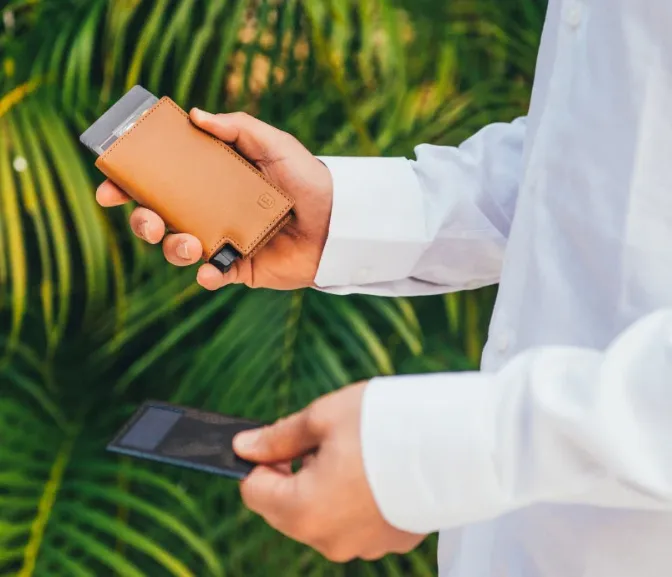A wallet has always been a simple tool for carrying money, cards, and identification. But as technology evolves, so do the risks that come with it. With contactless payments and smart cards becoming standard, digital theft—known as RFID skimming—has entered the picture. For Australians who travel frequently or spend time in crowded public spaces, switching to an RFID-blocking wallet could be one of the smartest upgrades you’ll ever make.
What Exactly Is RFID?
RFID stands for Radio Frequency Identification, the same technology that allows you to tap your card on a reader or breeze through airport checkpoints with an e-passport. These tiny chips transmit information wirelessly, making life more convenient but also leaving data exposed to theft. Scammers with portable scanners can capture card details without ever touching your wallet.
Why Regular Wallets Fall Short
A traditional leather wallet might look stylish, but it offers no defense against skimming. Imagine walking through a busy weekend market or boarding a train in Melbourne—someone with the right device could steal your financial details in seconds, and you wouldn’t even notice until it was too late. Countless Australians have discovered fraudulent charges on their cards after traveling or commuting with unprotected wallets.
How RFID Wallets Protect You
RFID-blocking wallets use special lining materials such as metal or carbon fiber to stop signals from reaching your cards. They look and feel much like regular wallets, but they add an invisible shield between your data and potential thieves. Whether you prefer a slim leather bifold, a travel pouch, or a minimalist card holder, these designs combine everyday practicality with peace of mind.
Durability and Style Compared
Gone are the days when protective wallets were clunky or unattractive. Modern RFID wallets come in sleek designs made from genuine leather, fabric, or even lightweight synthetics. They rival traditional wallets in looks and comfort while offering longer-lasting value. Regular wallets may still appeal to purists, but they often wear out faster and don’t offer the same level of security.
Is It Worth the Extra Cost?
While an RFID wallet may cost slightly more upfront, the price is minimal compared to the financial and emotional stress of identity theft. For Australians who rely on contactless technology daily—whether for commuting, shopping, or traveling overseas—the added protection is a wise investment.
When to Consider Upgrading
If you’re planning an international trip, spending time in tourist-heavy areas, or simply using tap-and-go payments regularly, the time to upgrade is now. Waiting until after a security breach could leave you with cancelled cards, frozen accounts, and hours of sorting out financial mess.
Choosing the Right RFID Wallet
Think about what matters most to you:
- Capacity – Do you carry only a few cards, or do you need extra space for cash and receipts?
- Material – Leather offers a timeless look, while synthetic fabrics are lightweight and rugged for travel.
- Purpose – A compact daily wallet may work for the office, but a travel belt or pouch could be better for long journeys.
Final Thoughts
Upgrading to an RFID wallet is less about chasing a trend and more about adapting to the digital realities of modern life. As contactless technology continues to expand, protecting your personal information has never been more important. A well-chosen RFID wallet ensures your money and identity stay secure, whether you’re at home in Australia or exploring the world.

Leave a Comment